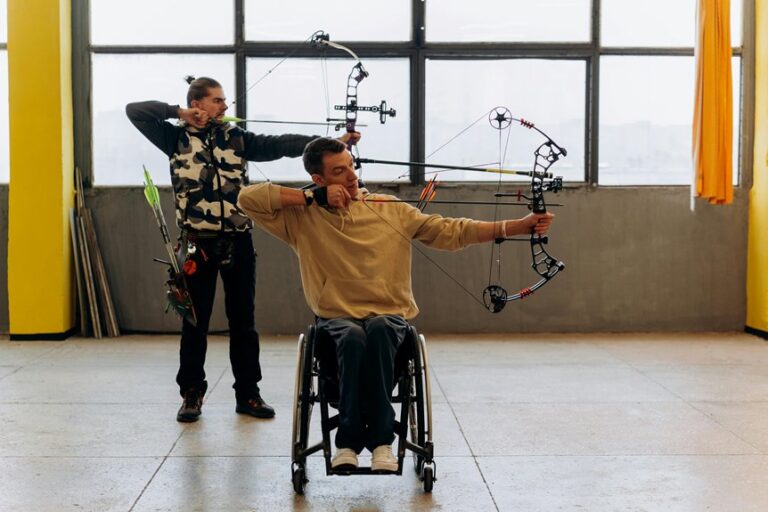Being quiet doesn’t mean being powerless. While extroverts love hogging the spotlight, introverts can steal it without saying a word.
Want proof? Watch what happens when the reserved person finally speaks up – everyone shuts up and pays attention. It’s like having a superpower that activates through selective silence.
Your mission isn’t to transform into some loud, obnoxious version of yourself. Your quietness is already an asset – you just need to polish it. The right techniques can turn your natural calm demeanor into magnetic presence that commands the room.
Time to discover how being the quiet one makes you the powerful one.
Key Takeaways
- Embrace quiet confidence by communicating through measured words and thoughtful actions rather than seeking external validation.
- Speak with intention by eliminating filler words while using strategic silences to enhance the impact of your communication.
- Adopt purposeful body language with upright posture and appropriate eye contact to nonverbally command respect.
- Master active listening through engagement techniques that demonstrate genuine interest in others’ perspectives.
- Maintain unwavering consistency between your words and actions while establishing clear boundaries that others respect.
Can quiet people can still command respect effectively?
Absolutely, quiet individuals can command tremendous respect—not despite their reserved nature, but often because of it.
When quiet people speak deliberately, listen intently, and demonstrate consistency between their words and actions, they frequently earn deeper respect than their louder counterparts who might rely on volume rather than substance.
Earned respect endures far longer than respect based solely on authority or position.
We’ll investigate five essential strategies that help quiet individuals develop genuine authority and respect without changing their fundamental nature.
What is quiet confidence?
Quiet confidence is projecting self-assurance without needing to be loud or dominate conversations.
It’s communicating through measured words, thoughtful actions, and steady presence rather than volume or constant talking.
A quietly confident person doesn’t seek validation, maintains composure under pressure, and influences others through substance over showiness.
Now we’ll examine the key components of quiet confidence and how you can develop it in your everyday interactions, even if you’re naturally reserved.
True high value men naturally embody quiet confidence through their actions rather than words.
How to Command Respect if You’re Quiet
Being quiet doesn’t mean you can’t command respect—it just requires a different approach than what the loud talkers use.
Many quiet folks think they need to change into extroverts to be taken seriously, but that’s about as useful as bringing a penguin to the desert—completely unnecessary and potentially disastrous for everyone involved.
Let me walk you through some practical ways to earn the respect you deserve without having to pretend you’re someone you’re not.
Speak clearly and with measured confidence
Speaking with clarity and measured confidence means delivering your words with intention and self-assurance, even when you’re naturally quiet.
The volume of your voice matters less than how you structure what you say. When quiet people speak deliberately—choosing words carefully and avoiding unnecessary fillers like “um” and “like”—others tend to lean in and listen more attentively. Consider it as quality over quantity; your thoughtful contributions carry weight precisely because they’re not lost in a flood of chatter.
Practice formulating complete thoughts before speaking, which gives your words a natural authority that commands respect. Your physical presence reinforces your verbal communication in powerful ways. Stand or sit with good posture, maintain appropriate eye contact, and use purposeful gestures to emphasize key points. These non-verbal cues signal confidence even when your voice remains soft.
Remember that speaking slowly often projects more authority than rushing—it suggests you believe your words deserve time and consideration. When you finish making your point, resist the urge to immediately add qualifiers or apologize for speaking.
Confidence grows through preparation and practice in low-stakes situations. Record yourself speaking about topics you care about, then listen critically. Note where you sound uncertain or where your voice trails off, and consciously work to strengthen those moments.
Join small discussion groups where you can practice contributing with increasing comfort. Each time you speak up despite feeling nervous, you’re reinforcing the neural pathways that make confident communication easier over time.
- Eliminate undermining phrases like “I might be wrong, but…” or “This may sound silly…” which diminish your authority before you’ve even made your point.
- Pause deliberately between sentences instead of rushing—these strategic silences create emphasis and give listeners time to absorb your message.
- Practice vocal variety by slightly adjusting your pitch and pace to emphasize important points, which makes even quiet speech more engaging and commanding.
- When someone interrupts you, calmly but firmly say, “I’d like to finish my thought” before continuing—this boundary-setting earns respect without requiring you to be loud.
Focusing on personal development through consistent self-improvement practices helps build the inner confidence that naturally translates to more commanding speech.
Maintain steady eye contact during conversations
| Eye Contact Level | What It Communicates | When To Use It |
|---|---|---|
| None | Disinterest, insecurity, avoidance, or social anxiety | Never in professional settings, may harm relationships |
| Fleeting | Nervousness, dishonesty, lack of confidence, preoccupation | When briefly collecting thoughts, processing complex information |
| Intermittent | Casual engagement, normal social awareness, comfort | Informal social situations, group discussions, casual meetings |
| Steady | Confidence, trustworthiness, engagement, leadership | Important conversations, interviews, presentations, negotiations |
Maintaining steady eye contact during conversations is a crucial element of effective nonverbal communication. The right amount of eye contact can dramatically improve your perceived credibility and help establish stronger connections with others.
Don’t stare intensely (that’s creepy!), but don’t constantly look away either. Find that sweet spot—about 70% eye contact—where you appear confident without making others uncomfortable. Remember, even as a quiet person, your eyes speak volumes.
The science behind effective eye contact patterns reveals fascinating insights about human interaction and social bonding. Studies show that maintaining appropriate eye contact triggers the release of oxytocin, often called the trust hormone, which helps build stronger interpersonal connections and enhances mutual understanding.
Personal value enhancement comes naturally when you master these essential nonverbal communication skills.
Use purposeful body language, not fidgeting
Your body speaks volumes when your voice stays quiet, and intentional movements communicate confidence while fidgeting screams insecurity.
First, become aware of your habitual movements – those unconscious things you do when nervous like playing with your hair, bouncing your leg, or clicking your pen. We all have these little tension-releasing habits, and they’re totally normal, but they can undermine your presence in professional settings.
Try this somewhat uncomfortable exercise: record yourself during a video call or ask a trusted friend to point out your fidgets. Yeah, it’s awkward to watch yourself, but identifying these habits is the first step to substituting them with purposeful alternatives. Remember, stillness itself can be incredibly powerful – the person who can remain composed while everyone else shifts and fidgets naturally draws attention.
Now, let’s alter your physical presence with deliberate movements. When speaking, use measured hand gestures to emphasize key points rather than random movements. Plant your feet shoulder-width apart when standing to create a stable foundation. When seated, lean slightly forward to show engagement instead of shrinking back in your chair.
Make your movements count – when you do move, do so with intention and purpose. This doesn’t mean becoming robotic; it means making conscious choices about your physical expression rather than letting anxiety drive your body language.
The real magic happens when you align your body with your message. If you’re making an important point, straighten your posture. When listening, maintain eye contact and nod thoughtfully instead of glancing around the room.
Your quiet nature becomes a strength when paired with confident physicality – people notice the contrast between your measured words and strong presence. The person who speaks rarely but holds themselves with dignity commands more attention than the loudest voice with scattered energy.
Your goal isn’t to eliminate all movement, but rather to guarantee each physical expression supports rather than undermines your message. Developing these high-value traits in your body language will naturally command more respect from others in both personal and professional relationships.
- Practice the power pose technique – spend two minutes in a confident stance (hands on hips, feet apart, chest open) before important interactions to naturally reduce stress hormones and increase confidence that carries into your body language.
- Create a physical “reset button” – develop a subtle movement like pressing your feet firmly into the floor or placing your palms flat on the table that helps you quickly recenter when you catch yourself fidgeting in meetings.
- Video record yourself during practice presentations with the sound off, focusing only on your physical presence – this uncomfortable but revealing exercise helps identify distracting movements you weren’t aware of making.
- Establish meaningful eye contact that lasts 3-4 seconds before looking away naturally, as this communicates confidence and engagement without creating awkwardness, especially powerful for quieter individuals.
Listen more, then respond with thoughtful points
While many people rush to fill silence with their voices, quiet individuals possess a natural superpower that commands genuine respect: exceptional listening skills. When you truly listen before speaking, your responses carry more weight—they’re thoughtful bombs rather than verbal confetti, allowing you to build deeper connections and demonstrate emotional intelligence through purposeful communication rather than reactive chatter.
Practice active listening by maintaining eye contact and nodding occasionally to show engagement. Don’t just wait for your turn to talk; genuinely absorb what others say and process their message both verbally and non-verbally.
| Listening Technique | Respect-Building Result |
|---|---|
| Ask clarifying questions | Shows thoughtful engagement and desire to understand deeply |
| Pause before responding | Demonstrates careful consideration and emotional maturity |
| Reference earlier points | Proves you were paying attention and value the conversation |
| Summarize before adding | Validates others’ contributions and ensures clear understanding |
| Mirror body language | Creates rapport and demonstrates empathy |
| Use minimal encouragers | Shows active engagement without interrupting |
Your thoughtful responses after attentive listening will make people think, “Wow, when they speak, I should listen.” That’s commanding respect without raising your voice.
The power of strategic silence extends beyond mere conversation into professional and personal relationships. By developing strong listening habits, you create an atmosphere of mutual respect and understanding that naturally elevates your status in any group dynamic, while simultaneously helping others feel valued and heard.
Recognizing valuable personal traits in yourself becomes easier when you consistently practice these active listening techniques.
Keep your posture upright and open, avoid slouching
Your body speaks volumes when your voice doesn’t – maintaining an upright, open posture tells others you’re confident and deserving of respect without saying a word.
Standing or sitting tall doesn’t just make you look more confident; it actually makes you feel more confident too. When you catch yourself hunching forward or making yourself smaller (something quiet folks tend to do subconsciously), gently roll your shoulders back, lift your chest slightly, and imagine a string pulling the top of your head toward the ceiling. This simple adjustment sends powerful signals to both your brain and everyone around you that you belong in the room and deserve to be heard when you do speak.
Open body language reinforces this message of quiet confidence. Uncross your arms, face people directly rather than angling away, and take up your fair share of space at the table. Many quiet people habitually minimize their physical presence, which unfortunately gets misinterpreted as insecurity or lack of engagement.
When you deliberately maintain open posture during meetings or conversations, you communicate that while you may not be the loudest voice, you’re fully present and engaged in what’s happening.
The beauty of posture as a respect-building tool is that it requires zero verbal effort but yields tremendous results. Practice your posture during everyday activities until it becomes second nature. Try standing in front of a mirror to check your alignment, or set quiet reminders on your phone to prompt posture checks throughout the day.
Even in uncomfortable situations where your instinct might be to physically shrink, consciously maintaining your posture will help you project steady confidence that others naturally respect. Studies show that displaying high value traits through proper posture can significantly increase others’ perception of your social status and authority.
- Mirror check: Spend 30 seconds each morning checking your posture in a mirror – shoulders back, chest open, head level (not tilted down), and feet planted firmly about hip-width apart.
- Ergonomic workspace: Adjust your chair and desk height so your computer screen sits at eye level, forcing you to maintain good posture rather than hunching forward while working.
- Power poses before important interactions: Take two minutes in private to stand in a confident stance (hands on hips, feet apart, chest open) before entering situations where you want to command respect.
- Clothing considerations: Wear clothes that fit well and make you feel confident – uncomfortable clothing often leads to fidgeting and posture adjustments that undermine your composed presence.
Choose your words carefully, avoid filler phrases
Quality of speech trumps quantity when you’re a quiet person seeking respect in professional and social settings. Rather than filling silence with common verbal fillers like “um,” “like,” or “you know,” embrace strategic pauses that give weight to your words and demonstrate confidence; these moments of silence allow listeners to absorb your message while positioning you as someone who carefully considers their thoughts before speaking.
| Filler to Avoid | Replace With | Impact |
|---|---|---|
| “I think maybe” | “I believe” or “In my experience” | Conveys confidence and personal authority |
| “Kind of/Sort of” | [Strategic pause] or direct statement | Shows thoughtfulness and precision |
| “Just wanted to” | Direct statement (“I recommend”) | Demonstrates authority and purpose |
| “You know what I mean” | [End statement clearly] | Shows command of communication |
| “Like” | Specific example or comparison | Increases clarity and professionalism |
Effective communication doesn’t need constant chatter to make an impact on your audience. Instead, deliver clear, concise statements that pack a punch, focusing on quality content that resonates with listeners. High value leaders consistently avoid rambling conversations that diminish their authority and impact.
Strategic silence serves as a powerful tool in professional communication, allowing you to command attention through deliberate word choice and timing. Think of yourself as a sniper rather than a machine gun – one well-aimed thought often accomplishes more than a barrage of words, and this precision-based approach helps establish you as a thoughtful communicator whose contributions carry significant weight.
The art of concise communication relies heavily on preparation and self-awareness during conversations. When you speak with intention and eliminate unnecessary verbal clutter, even quiet voices command the room, creating lasting impressions through carefully chosen words rather than volume or frequency of speech.
Set boundaries calmly but firmly when needed
Boundary-setting is the quiet person’s superpower—a way to command respect without needing to raise your voice or become someone you’re not.
When setting boundaries, start with clarity in your own mind about what you’ll and won’t accept. Many quiet folks struggle because they haven’t defined their limits until they’re already frustrated. Before any important interaction, take a moment to identify potential boundary issues. For example, if you know a colleague repeatedly interrupts you in meetings, decide in advance how you’ll address it: “I appreciate your enthusiasm, but I’d like to finish my thought.” This mental preparation helps you respond confidently rather than freeze up when the moment arrives.
The delivery matters enormously when you’re naturally reserved. Make direct eye contact, maintain neutral body language (no nervous fidgeting or apologetic smiling), and speak in a measured, steady tone. You might feel your heart racing—that’s normal—but externally, aim for calm assertion. When that boundary-crossing coworker interrupts again, pause, look directly at them, and say, “I wasn’t finished speaking. As I was saying…” Notice there’s no apology or question mark at the end. This approach feels uncomfortable at first but becomes easier with practice. Remember, people often respect what you teach them to respect.
Your quietness can actually enhance boundary-setting because when typically reserved people speak up, others tend to pay attention. The contrast between your usual demeanor and your boundary statement gives your words additional weight. This doesn’t mean becoming confrontational—it means being truthful about your needs without diminishing yourself or others. The goal isn’t to win arguments but to establish mutual respect. Setting clear boundaries is a fundamental trait of high-value men who command genuine respect in their personal and professional lives.
Practical ways to set boundaries effectively:
- Use the “broken record” technique—calmly repeating your boundary without elaborating or justifying when someone pushes back: “I understand you need this report, but I can’t stay late tonight” (repeated as necessary)
- Frame boundaries as statements rather than questions or apologies: Say “I don’t take work calls after 7pm” instead of “I hope it’s okay if I don’t answer calls after 7pm”
- Practice physical boundaries too—maintain comfortable personal space in conversations and gently step back if someone stands too close
- Address boundary violations promptly rather than letting resentment build—small corrections are easier than confronting patterns that have continued for months
Let your actions consistently back your words
Consistency speaks louder than any words you might utter, especially when you’re naturally quiet or reserved in your communication style. When your actions speak in perfect alignment with your statements, people can’t help but respect you, as they see the genuine nature of your character through your daily choices and behaviors. It’s like building a silent reputation that does the talking for you, creating an unshakeable foundation of trust that grows stronger with each aligned action and kept promise. Understanding how to spot low value behaviors helps you consciously avoid traits that diminish respect from others.
| Actions That Build Respect | Why They Work |
|---|---|
| Following through on promises | Shows reliability and builds trust through consistent delivery of commitments |
| Arriving on time | Demonstrates respect for others’ schedules and values their time investment |
| Admitting mistakes quickly | Reveals authentic character and shows emotional maturity in facing consequences |
| Standing by your principles | Proves your convictions and shows unwavering ethical standards under pressure |
| Helping others without boasting | Demonstrates genuine kindness and reveals true servant leadership qualities |
| Maintaining professional boundaries | Establishes clear expectations and shows self-respect in relationships |
| Following up consistently | Builds dependability and shows attention to detail in all interactions |
Your consistent behavior creates a pattern people can trust, forming the bedrock of your professional and personal relationships. While the loud folks are making bold claims, you’re quietly proving your worth through actions, letting your track record speak volumes about your character.
The power of behavioral integrity manifests in both small moments and significant decisions throughout your career journey. Your dedication to maintaining alignment between words and actions creates a ripple effect that influences team culture and organizational trust, while simultaneously building your reputation as someone who consistently delivers on their commitments and upholds their values.
Project your voice so others can easily hear you
Having a voice that carries properly isn’t only about shouting—it’s about learning to speak with enough power that your words reach your audience without strain.
Speaking too quietly is the quickest way to get overlooked in a meeting or conversation, even when your ideas are brilliant. Many quiet folks breathe too shallowly, sending words out with minimal support from their diaphragm. Start by practicing deeper breathing—feel your stomach expand, not merely your chest—then use that air to fuel your words. Stand or sit up straight too; slouching collapses your lungs and weakens your vocal projection immediately.
The good news? Voice projection is absolutely trainable, even for the naturally soft-spoken among us. Try reading passages aloud for five minutes daily, gradually increasing your volume without straining. Record yourself to hear the difference between mumbling and clear speech. When you’re in actual conversations, aim your voice toward the person farthest from you rather than dropping it as sentences end. Watch how respecting your own voice enough to make it audible actually commands more respect from listeners.
- Find your natural resonance: Hum before speaking in important situations to locate where your voice naturally vibrates strongest (usually mid-chest for men, higher chest/throat for women), then speak from that place for maximum projection.
- Practice the “ten feet rule”: Regularly practice speaking as if the person you’re addressing is standing ten feet away—not shouting, just properly projecting—until this becomes your default volume.
- Use strategic pauses: Rather than rushing through important points quietly, pause briefly before key statements, take a proper breath, and deliver them with controlled projection.
- Reduce upspeak and vocal fry: Eliminate question inflections at the end of statements and that gravelly vocal fry that diminishes authority—both habits make quiet voices even harder to hear and respect.
Use silence strategically to emphasize key points
While many believe command comes from filling conversations with words, strategic silence can actually be your most powerful tool for gaining respect. When you master powerful pauses, you create space for your ideas to land with impact, allowing listeners to process and internalize your message more deeply. Deliberate silence serves as a crucial element of effective communication that demonstrates both confidence and thoughtfulness in your delivery. Think of silence as punctuation for your spoken thoughts—it gives others time to absorb what you’ve said and creates an atmosphere of authority and gravitas.
| Silent Persuasion Tactics | When To Use Them |
|---|---|
| The 3-second pause | After making an important point; allows information to sink in; creates anticipation |
| The thoughtful gaze | When asked a complex question; shows careful consideration; builds credibility |
| The unhurried response | During negotiations or conflicts; demonstrates control; reduces emotional tension |
| The power pause | Before delivering critical information; commands attention; heightens impact |
| The reflective silence | After receiving feedback; shows respect; encourages further discussion |
Don’t rush to fill awkward silences—own them instead! People will start hanging on your every word when they realize you only speak when you have something valuable to say. Silent confidence is magnetic, and those who master it command attention without shouting for it. The power of restraint in communication creates an aura of authority that draws others in naturally.
The strategic use of silence dynamics extends beyond basic conversation into crucial business scenarios and leadership moments. Mastering the art of the pause can transform ordinary interactions into memorable exchanges, while demonstrating emotional intelligence and strategic thinking. The most effective communicators understand that the space between words often carries as much weight as the words themselves, and they leverage this understanding to maximize their influence in both professional and personal contexts.
Dress neatly to reflect self-respect and care
When you dress with intention and care, you silently communicate your self-respect before saying a single word—which is particularly powerful when you’re naturally quiet.
Your appearance creates an immediate impression that either reinforces or undermines your presence, especially when you’re not filling the room with your voice. Consider your daily environments and dress slightly better than what’s expected—not to peacock around, but to signal that you take yourself seriously enough that others should too.
That well-fitting shirt, those clean shoes, or that thoughtfully chosen accessory becomes your visual voice, saying “I matter” when your actual voice might be softer than others’. Remember, this doesn’t revolve around expensive clothes; it’s concerning demonstrating that you pay attention to details and respect yourself enough to present your best self.
Many quiet folks mistakenly believe their ideas alone should command respect, neglecting how presentation amplifies credibility. When you walk into a meeting dressed with care, you’re already countering any assumptions about your confidence level before the conversation begins. The truth can be uncomfortable: humans make snap judgments based on appearance, and these judgments affect how seriously people take your contributions.
Avoiding common value errors in your presentation can prevent others from diminishing your worth before you even speak.
By dressing thoughtfully, you’re not being shallow—you’re strategically using non-verbal communication to your advantage when verbal communication mightn’t be your strongest suit. Look around at respected quiet leaders in your field—they rarely look disheveled or careless, because they understand appearance isn’t superficial; it’s foundational.
- Establish a signature style that feels authentic to you while conveying competence—perhaps it’s quality basics in neutral colors, distinctive glasses, or consistently well-chosen accessories that become associated with your reliable presence.
- Focus on fit above all else—even inexpensive clothes look impressive when they properly fit your body, while expensive but ill-fitting items can make you appear careless or uncomfortable in your own skin.
- Maintain impeccable grooming habits including clean nails, tidy hair, and appropriate scent (or lack thereof)—these seemingly small details signal attention to detail and self-respect that quiet people especially need to leverage.
- Create systems that eliminate daily decision fatigue about your appearance—consider a capsule wardrobe, Sunday outfit planning, or uniform dressing to make certain you consistently present well without draining mental energy better spent on your ideas and work.
Prepare key points before important talks
Your thoughtful preparation fundamentally shapes how effectively your message resonates with others, going far beyond surface-level impressions. While naturally extroverted communicators might rely on spontaneity, your methodical approach to discussion preparation provides a distinct competitive advantage that can be leveraged in any professional setting.
| Discussion Scenario | Preparation Strategy |
|---|---|
| Team meeting | Bullet 3 ideas with supporting facts, prepare specific examples, gather relevant data points |
| Performance review | List accomplishments with metrics, document growth areas, outline future goals with timeline |
| Disagreement | Note your position and compromise options, research counterpoints, prepare evidence-based responses |
| Client presentation | Outline problem/solution framework, develop ROI analysis, create concrete implementation steps |
| Networking event | Prepare 2 questions and your elevator pitch, research attendees, identify mutual connection points |
Don’t mistake your quietness for powerlessness. When you’ve done your homework, those few carefully chosen words will hit with laser precision that rambling colleagues can’t match.
The key to maximizing your preparation advantage lies in strategic implementation and consistent refinement of your approach. Your ability to systematically organize thoughts and anticipate discussion trajectories positions you as a formidable communicator who can navigate complex conversations with confidence and precision.
Avoid interrupting; wait your turn to speak
Waiting your turn to speak instead of interrupting shows respect for others while paradoxically commanding more respect for yourself, especially when you’re naturally quiet.
The patience to wait your turn creates a powerful contrast that makes people actually listen when you do speak. Think about it—we’ve all been in conversations where everyone’s talking over each other, and nothing meaningful gets accomplished. When you deliberately hold back, observe the flow, and then contribute thoughtfully, people notice that difference. Your restraint signals confidence rather than weakness; it shows you’re secure enough to listen fully before responding, which is actually a rare quality these days.
Unlike the stereotypical high value men, who command attention through measured and thoughtful communication, aggressive alpha males often dominate conversations through interruption and volume.
Timing your contributions strategically can modify how your words land. Wait for natural pauses in conversation rather than forcing your way in. When discussions get heated, the person who calmly waits and then speaks with measured clarity often becomes the voice of reason everyone turns to. Remember that quieter people often struggle with the anxiety of “missing their moment,” but the truth is, good conversations circle back to important points, giving you multiple opportunities to contribute without interrupting.
The art of waiting your turn becomes easier when you recognize that quality contributions outweigh quantity. Your measured approach means when you finally speak, you’re not merely repeating what others have said or reacting impulsively. You’re offering something that’s been considered and refined while others were busy talking over each other. This thoughtful approach earns you the reputation of someone worth listening to—which ultimately gives your quiet voice more power than the loudest person in the room.
- Track conversation patterns – Notice how conversations ebb and flow in your workplace or social circles. Most discussions have rhythms where you can find natural entry points without interrupting.
- Prepare mental talking points – While waiting your turn, organize your thoughts so when your moment comes, you can speak clearly and confidently without rambling.
- Use body language signals – Lean slightly forward, make brief eye contact, or raise a finger slightly to indicate you have something to add without verbally interrupting.
- Practice the pause – When someone finishes speaking, count to two in your head before responding. This tiny pause makes sure they’re truly finished and signals to others that you’re thoughtful rather than impulsive.
Acknowledge others’ opinions respectfully
Acknowledging others’ opinions respectfully stands as one of the most powerful tools in a quiet person’s arsenal for commanding respect and building meaningful relationships. When you validate someone’s viewpoint through active engagement and mindful response—even if you fundamentally disagree—you’re demonstrating a level of emotional intelligence and interpersonal awareness that loud talkers often lack, which can set you apart in both professional and social settings. People notice this maturity and naturally gravitate toward your thoughtful presence, recognizing the value of someone who takes time to process and respect different perspectives. This approach helps establish you as a trusted voice in conversations and creates an environment where others feel safe sharing their thoughts.
| Action | Result |
|---|---|
| Active listening with eye contact and verbal acknowledgment | Others feel deeply valued and understood |
| Opinion validation through specific feedback | Builds lasting mutual respect and trust |
| Respectful feedback with concrete examples | Enhances your credibility and authority |
| Thoughtful response timing | Shows careful consideration of ideas |
| Non-verbal affirmation | Creates comfortable dialogue space |
Try saying, “I understand your perspective on this” before offering your thoughts. This simple bridge shows you’ve processed their ideas before sharing yours.
Effective communication requires more than just waiting for your turn to speak—it demands genuine engagement with others’ viewpoints and careful consideration of their experiences. When you practice mindful listening and respond with intention, you create an environment where meaningful dialogue can flourish, leading to stronger professional relationships and more productive conversations.
Stay calm under pressure to show control
Maintaining composure during stressful situations shows an inner strength that commands far more respect than raising your voice ever could.
When chaos erupts around you—whether it’s a heated argument at work or a crisis situation—your quiet demeanor becomes your superpower. Instead of matching others’ escalating energy, take a deep breath and consciously slow your speech and movements. People naturally gravitate toward the calmest person in the room during turmoil. They’re looking for stability, and your measured response provides exactly that anchor.
I’ve watched quiet colleagues change into unexpected leaders simply by remaining steady while everyone else spiraled into panic mode. The beautiful thing about staying calm is that it actually gives your words more weight. When you do speak up after thoughtfully considering the situation, people lean in to listen. They’re not merely hearing noise; they’re receiving carefully considered thoughts.
Practice controlling your physical responses first—regulate your breathing, relax your shoulders, and maintain eye contact without staring someone down. These subtle signals communicate that you’re in command of yourself, which is the first step to commanding a room.
The calm-under-pressure approach works particularly well for quiet folks because it aligns with our natural tendencies. Rather than trying to force yourself into an extrovert’s approach that feels inauthentic, you’re leveraging your inherent thoughtfulness as strength. The person who responds instead of reacts, who thinks before speaking, who keeps their emotions in check while acknowledging them—that person radiates a magnetic confidence that doesn’t need to announce itself with volume or bravado.
- Practice the pause technique: When tension rises, count silently to five before responding. This tiny delay prevents reactive comments and demonstrates remarkable self-control.
- Master the art of the calm question: Rather than making defensive statements when challenged, ask a thoughtful question instead. This redirects negative energy while positioning you as the level-headed problem-solver.
- Develop a physical grounding ritual: Create a subtle physical anchor—like pressing your feet firmly into the floor or placing your hands flat on a table—to center yourself when pressure mounts.
- Monitor your voice modulation: Consciously lower your volume and slow your speech rate when others get louder and faster. This contrast immediately establishes your composure and authority without saying “I’m in control.”
Use names when addressing people directly
One powerful technique in a quiet person’s arsenal lies in simply using someone’s name when you speak to them, creating an instant personal connection. People naturally light up when they hear their name spoken with intention – it signals respect and focused attention in a way nothing else can, activating specific regions in their brain associated with identity and self-awareness. Even as a quieter individual who might feel less confident in social situations, you’ll command notable presence by personalizing your interactions this way, making each exchange more meaningful and memorable. The strategic use of personalized communication helps bridge social gaps and creates lasting impressions, even for those who tend to be more reserved.
| Name Usage Timing | Impact Level | Reaction | Best Practices |
|---|---|---|---|
| Meeting someone new | High | Creates memorable first impression | Repeat name within first minute |
| During disagreements | Very high | De-escalates tension instantly | Use full name with respectful tone |
| In group settings | Medium | Helps you stand out | Address individuals specifically |
| Ending conversations | High | Leaves lasting impression | Combine with genuine farewell |
| Following up later | Very high | Shows exceptional attention | Reference previous interaction |
Don’t underestimate this simple yet powerful trick. When you say “Thanks for your help, Mike” instead of just “thanks,” you’re acknowledging the person’s unique identity and creating a moment of genuine connection.
The science behind name recognition reveals fascinating insights about human psychology and social dynamics. Research shows that hearing one’s name activates unique neural patterns in the brain, triggering increased attention and emotional engagement. This biological response explains why personalized addressing becomes such a powerful tool for building rapport and establishing stronger professional and personal relationships.
Keep your personal space respected firmly
Personal boundaries are the invisible force field that quiet folks need most—they define where you end and others begin, protecting your energy and commanding respect without you needing to shout.
Setting boundaries starts with body language that speaks volumes when your voice doesn’t. Stand tall with your shoulders back (even when you’re screaming internally), maintain eye contact that says “I see you seeing me,” and don’t be afraid to physically step back when someone crowds your bubble. That small backward step, paired with a gentle palm raised slightly, communicates more effectively than any awkward confrontation. Remember, your physical presence makes statements long before your words do.
When someone bulldozes your boundaries anyway (and trust me, they will), address it immediately but calmly. Something as simple as “I need a bit more space, thanks” works wonders without creating drama. The magic happens in the delivery—speak these words with the quiet confidence of someone who expects to be respected, not the apologetic tone of someone requesting a favor. Quiet doesn’t mean pushover, and the sooner people realize this about you, the quicker they’ll recognize your silent strength.
For the chronically quiet, saying “no” can feel like declaring war. But boundaries without enforcement are just suggestions. Practice declining requests that drain you with the same conviction you’d use to refuse a stranger asking to borrow your toothbrush. Your time and personal space aren’t community property—they’re valuable resources you get to control. When you protect these boundaries consistently, people naturally begin treating you with the respect you’ve been quietly deserving all along.
- Create a physical “respect radius” by positioning yourself strategically in rooms—corner seats provide wall protection on two sides, reducing the ways people can invade your space.
- Practice the “broken record” technique—calmly repeat your boundary statement without elaborating or apologizing when someone pushes back (“I still need that space, thank you”).
- Use strategic silence after stating your boundary—count to five in your head while maintaining eye contact instead of nervously filling the void with justifications.
- Develop a mental shortlist of polite but firm phrases that feel natural coming from your mouth, such as “I appreciate your enthusiasm, but I need some breathing room” or “I work best with a bit more personal space.”
Conclusion
Being quiet doesn’t mean being invisible. Your power comes from calm confidence, not noise.
Stop thinking you need to shout to be heard. Speak less, but make it count. Stand straight, look people in the eye, and say what you mean. No apologies needed for being the quiet one.
Set clear boundaries and stick to them. Your silence makes others lean in to listen – that’s actually pretty badass when you think about it.
You’re not broken and don’t need fixing. Your quietness is your superpower – might as well own it. Those loud people frantically filling every silence? Yeah, they wish they had your natural mystique.









